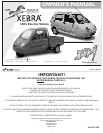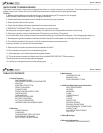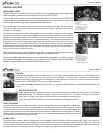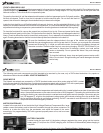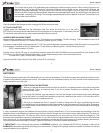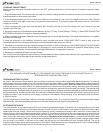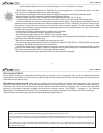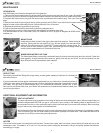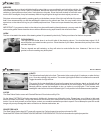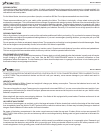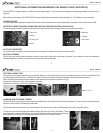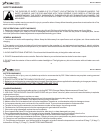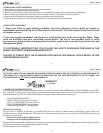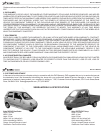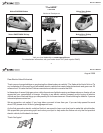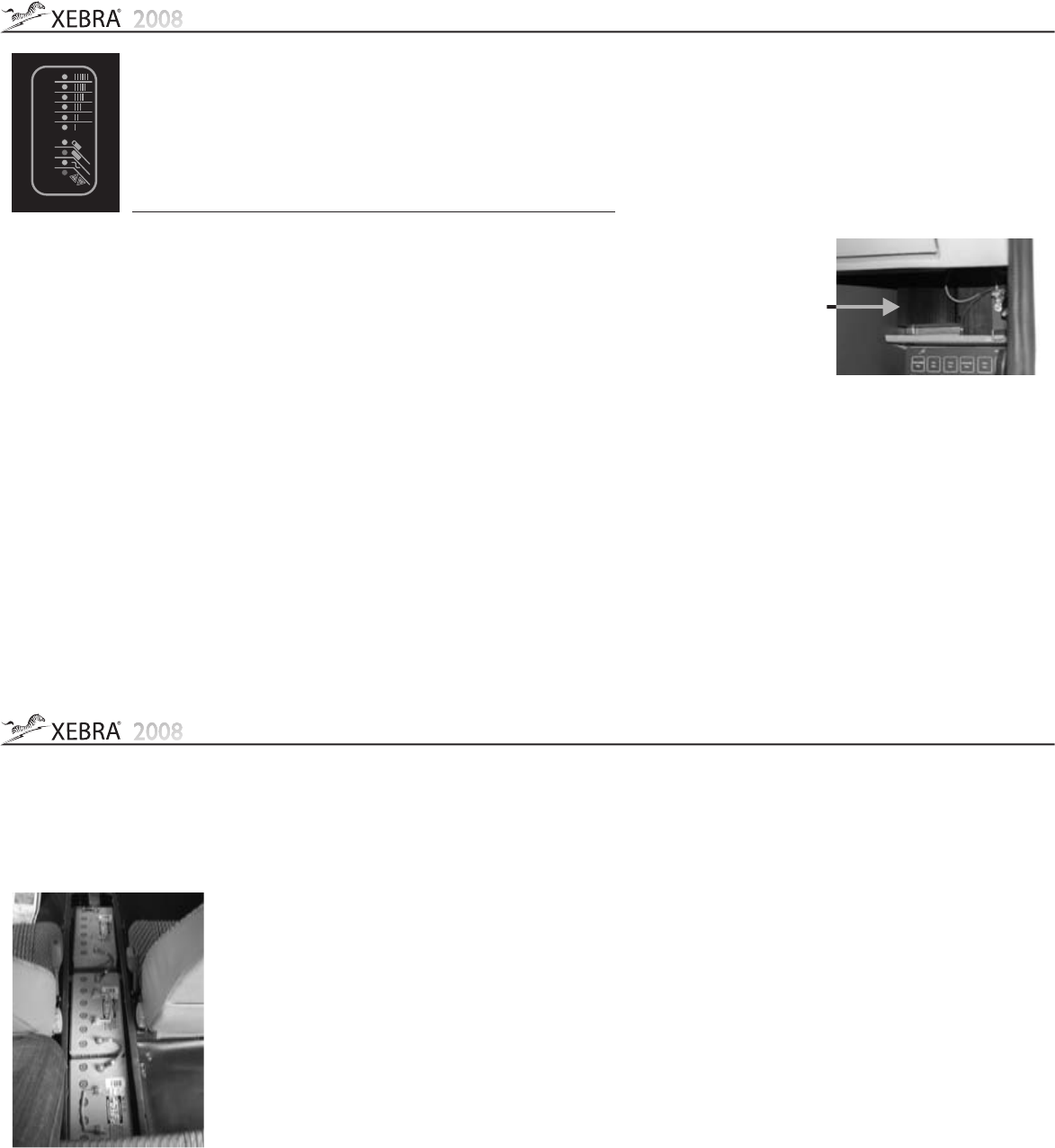
The charger has a group of 6 graduated lights indicating the relative charging current. When initially plugged in to a
depleted pack, the top light will illuminate, indicating a relatively high charging current. As the pack is charged, the
lights will illuminate sequentially. At some point in this process, the top light in the next group of 4 will illuminate,
indicating an 80% charge has been achieved. When all of the graduated lights are off, the second light in the group of 4
will illuminate, indicating a full charge. The third light indicates that AC power is applied to the unit. The last light is red
and indicates afault condition.
If fault isindicated, the charger must beunplugged for 20 secondsto be reset.
Located under the dashboard on the passenger side, just above the fuse box (or in the cab in
ZAPTRUCK), this device acts like the alternator in a regular gas car. It charges the 12 volt battery from the
72 volt tractionpack while driving. It onlyoperates when the keyis turned on.
Here are some interesting facts about your Xebra. The batteries can store about 7.2 kWh of energy. This translates into about 0.24
“Gallons” Of gasoline!But only 0.15 “Gallons”Are actuallyusable, about 4.75 kWh.
Your motor is rated at5kW, which translatesto 6.71 HP. Your peak horsepower is somewhathigher. When the motoris running at 5kW,
it is usingabout 70 amps from the72V battery pack.To calculate your “Miles pergallon,” Use the followingformula:
MPG= (miles traveledX 30) / kWh
A typical value is about 150 mpg. An inexpensive watt hour meter (Kill A Watt, PN 9034) can be purchased from your dealer or ZAP.
This will giveyou the kWh part ofthe above equation.To calculate the cost permile, use the followingformula:
Cost per mile= (kWh X cost perkWh) / miles driven
Atypical value is$.02 per mile at $.10per kWh, or about$.47 per charge.
Refer to to determine possibleproblem.Charger Instructions
DC TO DC CONVERTER
HORSEPOWER VS XEBRAPOWER
9
Owner’sManual
BATTERIES
The most important component of the Xebra that you can control is the batteries. This section contains the procedure to follow in order
to optimize the batteries' performance and life. If the batteries are not maintained properly, the ZAP (as well as the manufacturer’s)
battery warranty maynot be valid.
1. Before you operate the Xebra for the first time you must fully charge the batteries using only the supplied
internal charger. This is an important step. If you fail to properly condition your batteries, their life and
performance will suffer!
2. To charge the batteries, plug the extension cord into the charger socket located on the rear passenger
side of the Xebra in the hatch that resembles a gas hatch. Make sure the outlet is 110V and the circuit is
rated for 20amps and is a dedicatedcircuit.
3. Be sure your batteries are FULLY charged. It's best to charge them 24 hours, especially the first time.
Your batteries are fully charged when the voltage meter on the dash reaches 79 volts or higher. Remember
the voltage meter will Not function until the key is on. The charger will shut off automatically when charging
is complete.
4. Like a combustion engine, the batteries will require time to properly break them in. Five or more charge and discharge cycles are
needed to break in the batteries for optimal range. After the first full charge, drive the Xebra 5 miles, then charge fully. The next trip,
drive 8 miles and charge fully. The third trip, drive 12 miles and charge fully. On the fourth trip, drive 15 miles and charge fully. This
procedure will maximize the capacity of the batteries. On your fifth trip, drive until the batteries are very low, but still drivable. Note how
many miles this is. It is recommended to discharge the batteries no more than 50% before charging for optimal battery performance.
You can estimate this percentageby mileage. Typical is a maximum of15 miles for optimalperformance.
5. : If your Xebra will be exposed to conditions, your batteries MUST BE fully charged or they will be
and the warranty will bevoid!! Keep your vehicle warm. Charge it inthe garage, instead of outside.The colder it is, the less
range and batterylife you will have.
CONDITIONING THE BATTERIES
IMPORTANT! FREEZING
DAMAGED
10
Owner’sManual



